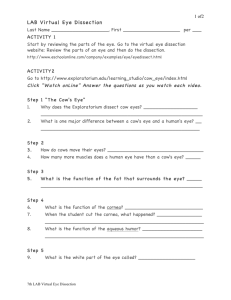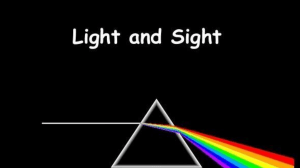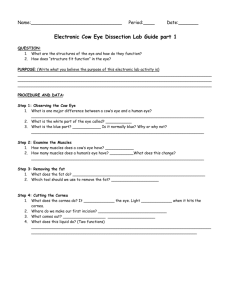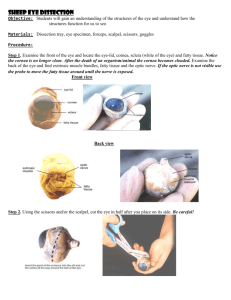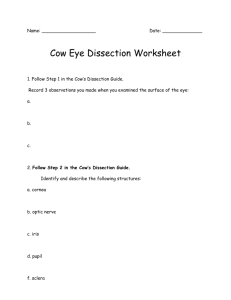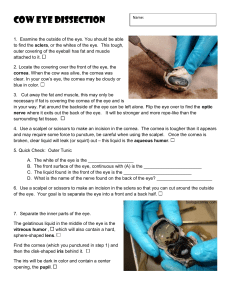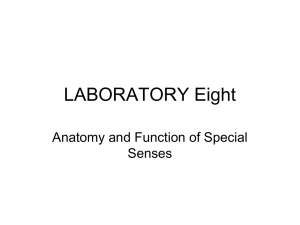Cow Eye Dissection - tutors
advertisement
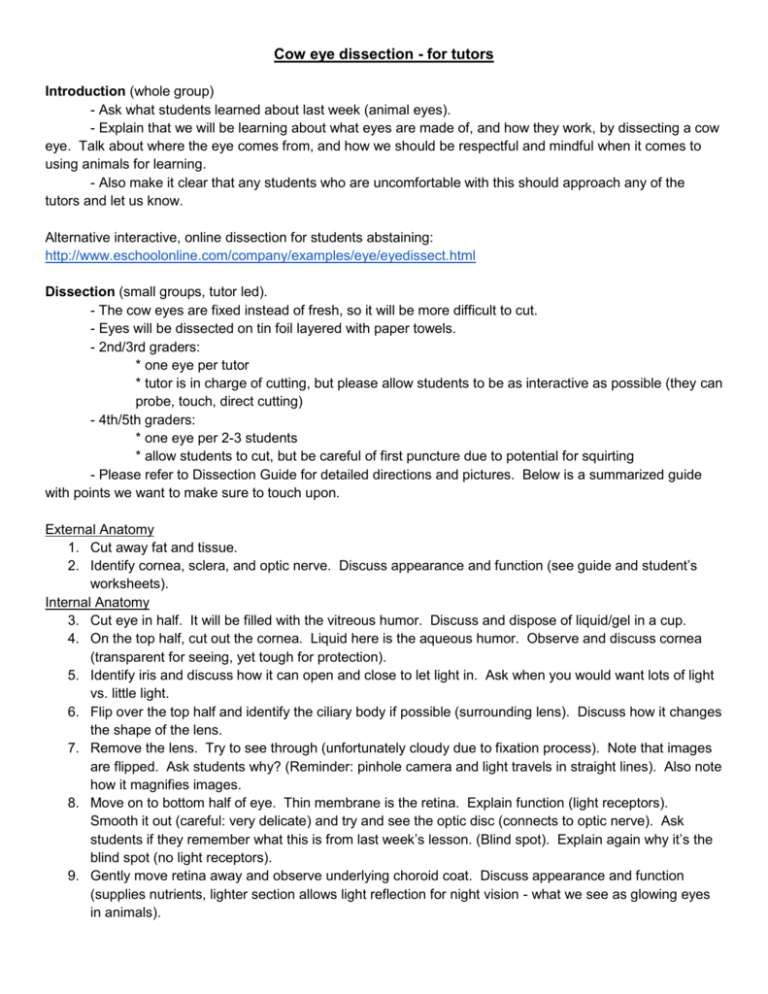
Cow eye dissection - for tutors Introduction (whole group) - Ask what students learned about last week (animal eyes). - Explain that we will be learning about what eyes are made of, and how they work, by dissecting a cow eye. Talk about where the eye comes from, and how we should be respectful and mindful when it comes to using animals for learning. - Also make it clear that any students who are uncomfortable with this should approach any of the tutors and let us know. Alternative interactive, online dissection for students abstaining: http://www.eschoolonline.com/company/examples/eye/eyedissect.html Dissection (small groups, tutor led). - The cow eyes are fixed instead of fresh, so it will be more difficult to cut. - Eyes will be dissected on tin foil layered with paper towels. - 2nd/3rd graders: * one eye per tutor * tutor is in charge of cutting, but please allow students to be as interactive as possible (they can probe, touch, direct cutting) - 4th/5th graders: * one eye per 2-3 students * allow students to cut, but be careful of first puncture due to potential for squirting - Please refer to Dissection Guide for detailed directions and pictures. Below is a summarized guide with points we want to make sure to touch upon. External Anatomy 1. Cut away fat and tissue. 2. Identify cornea, sclera, and optic nerve. Discuss appearance and function (see guide and student’s worksheets). Internal Anatomy 3. Cut eye in half. It will be filled with the vitreous humor. Discuss and dispose of liquid/gel in a cup. 4. On the top half, cut out the cornea. Liquid here is the aqueous humor. Observe and discuss cornea (transparent for seeing, yet tough for protection). 5. Identify iris and discuss how it can open and close to let light in. Ask when you would want lots of light vs. little light. 6. Flip over the top half and identify the ciliary body if possible (surrounding lens). Discuss how it changes the shape of the lens. 7. Remove the lens. Try to see through (unfortunately cloudy due to fixation process). Note that images are flipped. Ask students why? (Reminder: pinhole camera and light travels in straight lines). Also note how it magnifies images. 8. Move on to bottom half of eye. Thin membrane is the retina. Explain function (light receptors). Smooth it out (careful: very delicate) and try and see the optic disc (connects to optic nerve). Ask students if they remember what this is from last week’s lesson. (Blind spot). Explain again why it’s the blind spot (no light receptors). 9. Gently move retina away and observe underlying choroid coat. Discuss appearance and function (supplies nutrients, lighter section allows light reflection for night vision - what we see as glowing eyes in animals). Big picture discussion: Referring to the student’s diagram of the eye, ask how the eye sees (light passes through cornea/lens, get focused onto the retina which transmits signal through the optic nerve to our brain). Eye diagram - Cheat sheet



